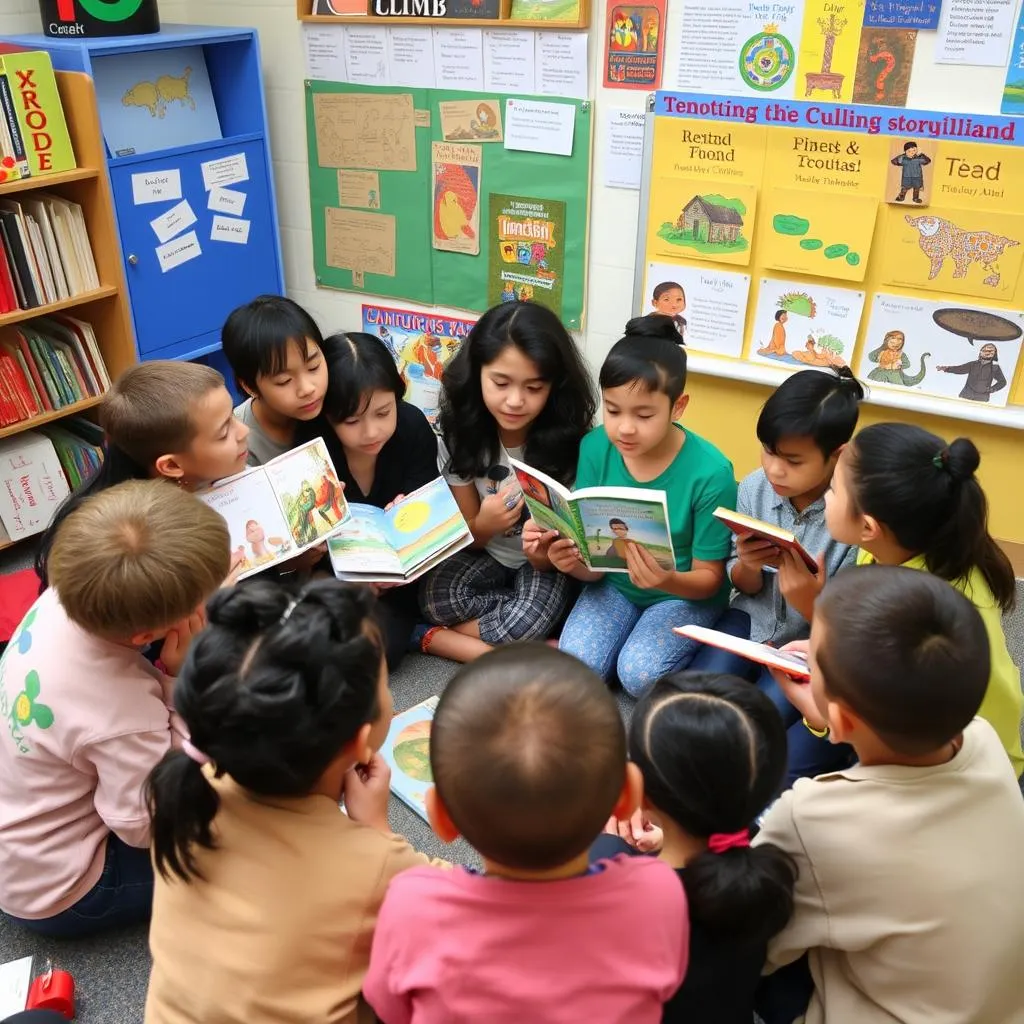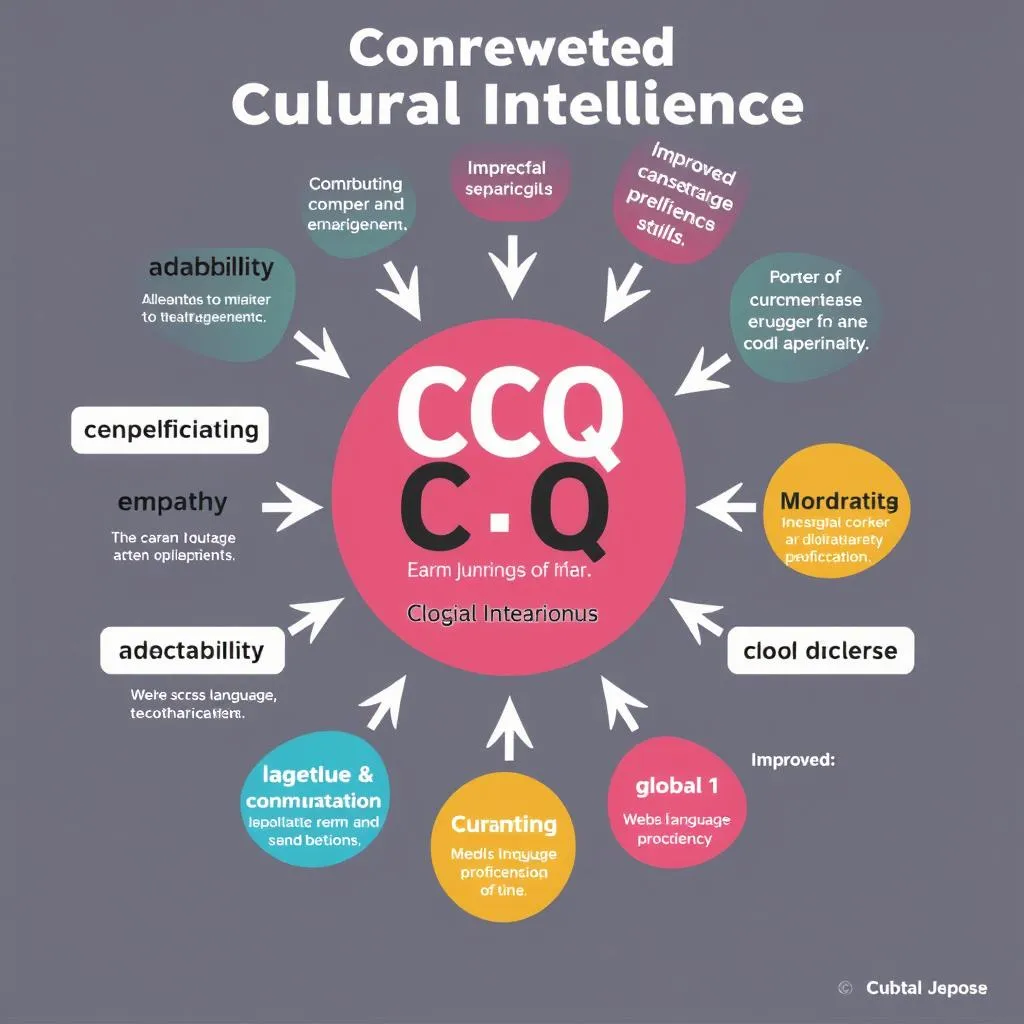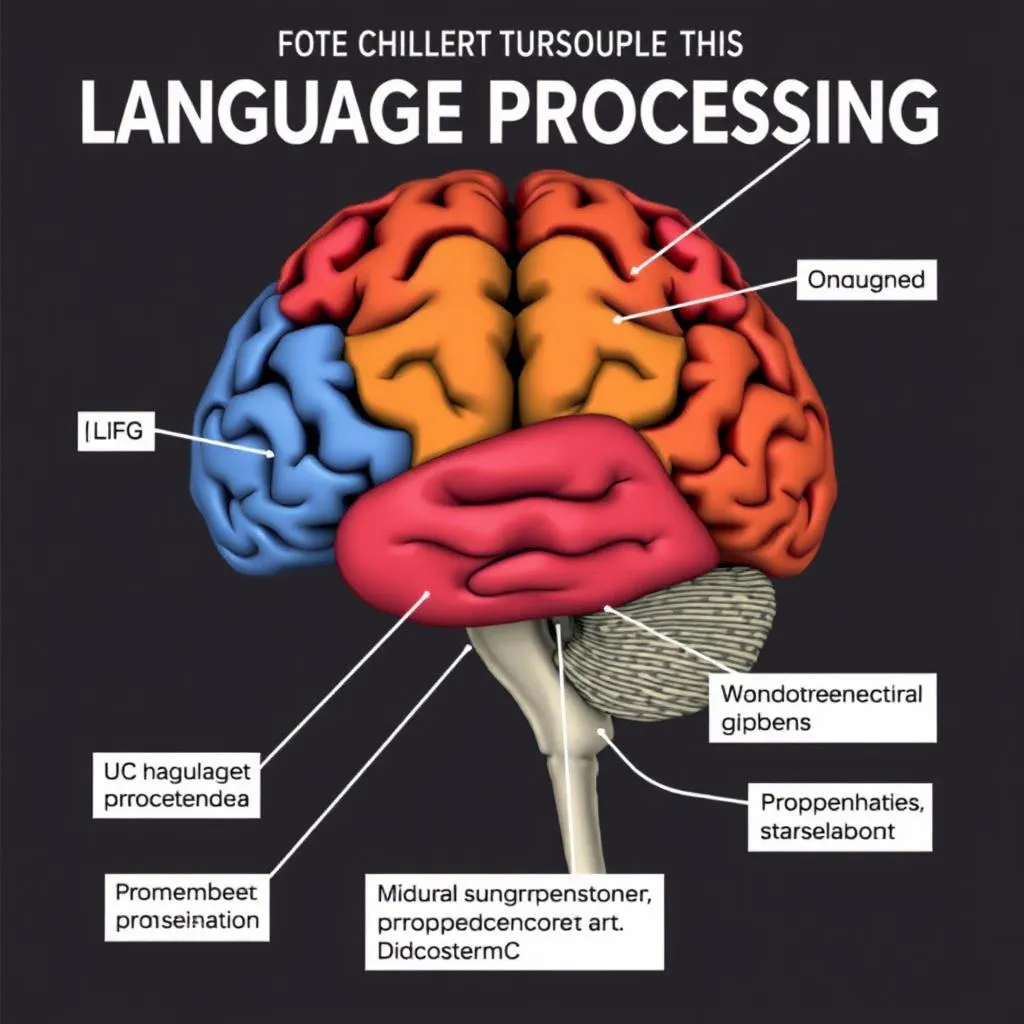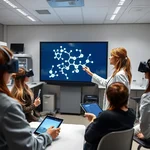Cultural narratives play a significant role in shaping language acquisition and understanding. This IELTS Reading practice test explores the impact of cultural narratives on language learning, offering a comprehensive examination of this fascinating topic. The rise of multicultural education in global classrooms has further emphasized the importance of understanding cultural narratives in language acquisition.
Passage 1 – Easy Text
The Power of Storytelling in Language Learning
Storytelling has been a fundamental aspect of human communication since ancient times. It serves as a powerful tool for transmitting cultural knowledge, values, and language skills from one generation to another. In the context of language acquisition, cultural narratives provide learners with authentic linguistic input and contextual clues that facilitate comprehension and retention.
Research has shown that exposure to cultural narratives can significantly enhance vocabulary acquisition, grammatical competence, and overall language proficiency. By engaging with stories from different cultures, learners not only expand their linguistic repertoire but also develop cultural awareness and empathy. This multifaceted approach to language learning aligns with the principles of communicative language teaching, which emphasizes the importance of meaningful interaction and authentic language use.
 Cultural narratives enhancing language learning
Cultural narratives enhancing language learning
Moreover, cultural narratives provide a rich source of idiomatic expressions, colloquialisms, and culturally-specific references that are essential for achieving native-like proficiency in a target language. By immersing themselves in these narratives, learners can develop a deeper understanding of the sociolinguistic aspects of language use, including pragmatics and discourse conventions.
Questions 1-5
Do the following statements agree with the information given in the passage? Write
TRUE if the statement agrees with the information
FALSE if the statement contradicts the information
NOT GIVEN if there is no information on this
- Storytelling has been used for communication since prehistoric times.
- Cultural narratives only help in vocabulary acquisition.
- Engaging with stories from different cultures can improve empathy.
- Communicative language teaching discourages the use of cultural narratives.
- Cultural narratives can help learners understand idiomatic expressions.
Questions 6-10
Complete the sentences below. Choose NO MORE THAN TWO WORDS from the passage for each answer.
- Storytelling is a tool for transmitting cultural knowledge, values, and ___ skills.
- Cultural narratives provide learners with authentic linguistic input and ___ clues.
- Exposure to cultural narratives can enhance ___ competence.
- Cultural narratives align with the principles of ___ language teaching.
- Learners can develop an understanding of ___ aspects of language use through cultural narratives.
Passage 2 – Medium Text
The Influence of Cultural Narratives on Second Language Acquisition
The interplay between cultural narratives and second language acquisition has garnered significant attention in recent years. Researchers and educators alike have recognized the profound impact that cultural stories, myths, and legends can have on the language learning process. This relationship is particularly relevant in the context of globalization and intercultural communication, where understanding diverse cultural perspectives has become increasingly important.
Cultural narratives serve as a linguistic bridge, connecting learners to the target language’s cultural context. They provide a rich tapestry of linguistic and cultural information, allowing learners to decode not just the language itself, but also the underlying cultural norms, values, and belief systems. This holistic approach to language learning goes beyond mere vocabulary and grammar acquisition, fostering a deeper, more nuanced understanding of the target language and its speakers.
One of the key benefits of incorporating cultural narratives into language learning is the development of cultural intelligence (CQ). CQ refers to an individual’s ability to function effectively in culturally diverse settings. By engaging with cultural narratives, language learners enhance their CQ, developing skills such as cultural adaptability, empathy, and cross-cultural communication. These skills are increasingly valued in our interconnected world, making cultural narratives an invaluable tool in language education.
 Cultural intelligence enhancing language learning
Cultural intelligence enhancing language learning
Furthermore, cultural narratives can significantly impact motivation and engagement in language learning. Stories that resonate with learners’ interests or experiences can spark curiosity and encourage further exploration of the target language and culture. This intrinsic motivation is a powerful driver of language acquisition, often leading to more sustained and effective learning outcomes.
However, it is important to note that the relationship between cultural narratives and language acquisition is not without challenges. Cultural bias and misinterpretation can sometimes hinder rather than help the learning process. Educators must be mindful of presenting diverse perspectives and encouraging critical thinking to avoid reinforcing stereotypes or oversimplifying complex cultural concepts.
The role of intercultural communication in global education further emphasizes the importance of understanding and utilizing cultural narratives in language learning contexts. As we continue to navigate an increasingly interconnected world, the ability to engage with and understand diverse cultural narratives will remain a crucial aspect of effective language acquisition and intercultural competence.
Questions 11-14
Choose the correct letter, A, B, C, or D.
-
According to the passage, cultural narratives act as a:
A) Linguistic barrier
B) Linguistic bridge
C) Cultural divide
D) Language replacement -
What does CQ stand for in the context of the passage?
A) Cultural Quotient
B) Communication Quality
C) Cultural Intelligence
D) Cognitive Questioning -
Which of the following is NOT mentioned as a benefit of incorporating cultural narratives in language learning?
A) Enhanced cultural adaptability
B) Improved cross-cultural communication
C) Increased language learning speed
D) Development of empathy -
What challenge is mentioned regarding the use of cultural narratives in language learning?
A) Lack of available resources
B) Cultural bias and misinterpretation
C) Difficulty in assessing learning outcomes
D) Resistance from language learners
Questions 15-20
Complete the summary below. Choose NO MORE THAN TWO WORDS from the passage for each answer.
Cultural narratives play a crucial role in second language acquisition, particularly in the context of (15) and intercultural communication. They serve as a (16) bridge, helping learners understand not just the language but also the underlying cultural norms and values. Engaging with cultural narratives can develop (17) , which is the ability to function effectively in diverse cultural settings. This approach to language learning can also increase (18) and engagement among learners. However, educators must be aware of potential (19) and misinterpretation when using cultural narratives. Overall, understanding diverse cultural narratives is essential for effective language acquisition and (20) competence in our interconnected world.
Passage 3 – Hard Text
The Neurocognitive Implications of Cultural Narratives in Language Processing
The intersection of cultural narratives and language acquisition has recently become a focal point in neurolinguistic research, revealing intricate connections between cultural exposure, neural plasticity, and linguistic proficiency. This burgeoning field of study elucidates the profound neurobiological impact that cultural narratives exert on the language learning process, offering unprecedented insights into the cognitive mechanisms underpinning second language acquisition.
Recent neuroimaging studies have demonstrated that exposure to cultural narratives activates a complex network of brain regions associated with language processing, including the left inferior frontal gyrus (LIFG), the superior temporal gyrus (STG), and the angular gyrus. These areas are integral to various aspects of language comprehension and production, such as syntactic processing, semantic integration, and pragmatic interpretation. Notably, researchers have observed enhanced neural connectivity and increased gray matter density in these regions among individuals who regularly engage with diverse cultural narratives during language learning.
The neuroplasticity induced by cultural narrative exposure appears to facilitate the formation of robust neural pathways that support efficient language processing. This neurobiological adaptation is particularly evident in the domain of pragmatic competence, where learners demonstrate improved ability to navigate culturally-specific communicative norms and contextual nuances. The heightened neural activation in the right hemisphere, specifically in the right superior temporal sulcus (rSTS) and the right temporoparietal junction (rTPJ), suggests enhanced capacity for social cognition and theory of mind – critical components in intercultural communication.
 Brain regions involved in language processing
Brain regions involved in language processing
Furthermore, the hippocampal-cortical network, crucial for memory consolidation and retrieval, exhibits heightened activity during cultural narrative processing. This neural response pattern indicates that cultural narratives may serve as mnemonic devices, enhancing the retention and recall of linguistic information by anchoring language elements within meaningful cultural contexts. The emotional valence often associated with cultural narratives also engages the amygdala and ventromedial prefrontal cortex (vmPFC), potentially reinforcing language learning through affective associations.
It is important to note, however, that the neurobiological impact of cultural narratives on language acquisition is modulated by various factors, including individual differences in cognitive style, prior linguistic experience, and cultural background. The concept of neural efficiency suggests that as learners become more proficient in processing cultural narratives, they may exhibit more localized and specialized patterns of neural activation, reflecting a shift towards automaticity in language processing.
The implications of these neurocognitive findings extend beyond the realm of language pedagogy, intersecting with fields such as cognitive psychology, anthropology, and educational neuroscience. The role of folklore in modern education can be better understood through this neuroscientific lens, offering new perspectives on how traditional narratives shape cognitive development and language skills. As research in this area continues to evolve, it promises to inform more effective, neurobiologically-grounded approaches to language teaching and intercultural communication training.
In conclusion, the neurocognitive exploration of cultural narratives in language acquisition reveals a complex interplay between culture, cognition, and neural architecture. This interdisciplinary approach not only enhances our understanding of the language learning process but also underscores the intrinsic value of cultural diversity in shaping the multilingual brain. As we continue to unravel the neural substrates of cultural narrative processing, we may discover new pathways to fostering linguistic proficiency and intercultural competence in an increasingly globalized world.
Questions 21-26
Complete the summary below. Choose NO MORE THAN TWO WORDS from the passage for each answer.
Neurolinguistic research has revealed significant connections between cultural narratives and language acquisition. Exposure to these narratives activates a (21) of brain regions, including the LIFG, STG, and angular gyrus. This activation leads to enhanced (22) and increased gray matter density. The neuroplasticity induced facilitates the formation of (23) that support efficient language processing. This adaptation is particularly evident in (24) , where learners show improved ability to navigate culturally-specific communicative norms. The hippocampal-cortical network exhibits heightened activity, suggesting that cultural narratives may serve as (25) . However, the impact of cultural narratives on language acquisition is modulated by various factors, including (26) in cognitive style and prior linguistic experience.
Questions 27-30
Choose the correct letter, A, B, C, or D.
-
According to the passage, which of the following brain regions is associated with social cognition and theory of mind?
A) Left inferior frontal gyrus
B) Superior temporal gyrus
C) Right superior temporal sulcus
D) Angular gyrus -
The engagement of the amygdala and ventromedial prefrontal cortex during cultural narrative processing suggests:
A) Enhanced visual processing
B) Improved memory consolidation
C) Reinforced language learning through emotional associations
D) Increased analytical thinking -
The concept of neural efficiency in language learning suggests that proficient learners:
A) Activate more brain regions while processing cultural narratives
B) Show more generalized patterns of neural activation
C) Exhibit more localized and specialized neural activation patterns
D) Rely less on the hippocampal-cortical network -
The neurocognitive study of cultural narratives in language acquisition is described as:
A) Purely theoretical with limited practical applications
B) Relevant only to language pedagogy
C) Intersecting with multiple disciplines beyond language study
D) Focused exclusively on memory consolidation processes
Answer Key
Passage 1
- TRUE
- FALSE
- TRUE
- FALSE
- TRUE
- language
- contextual
- grammatical
- communicative
- sociolinguistic
Passage 2
- B
- C
- C
- B
- globalization
- linguistic
- cultural intelligence
- motivation
- cultural bias
- intercultural
Passage 3
- complex network
- neural connectivity
- robust neural pathways
- pragmatic competence
- mnemonic devices
- individual differences
- C
- C
- C
- C
How museums support cultural education for young learners provides additional insights into the practical applications of cultural narratives in language education, complementing the neurocognitive perspective discussed in this passage.


